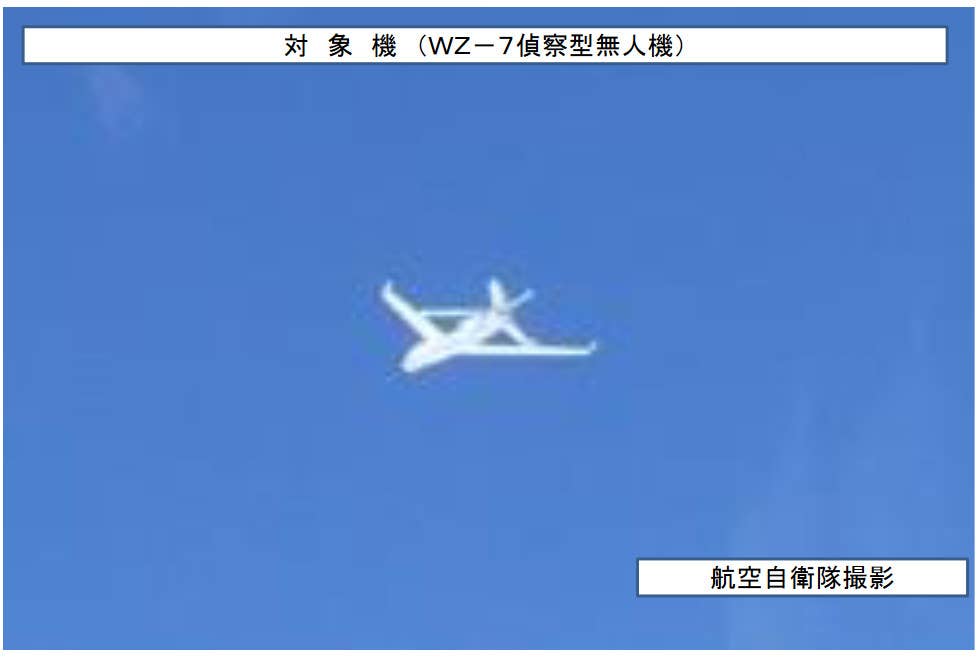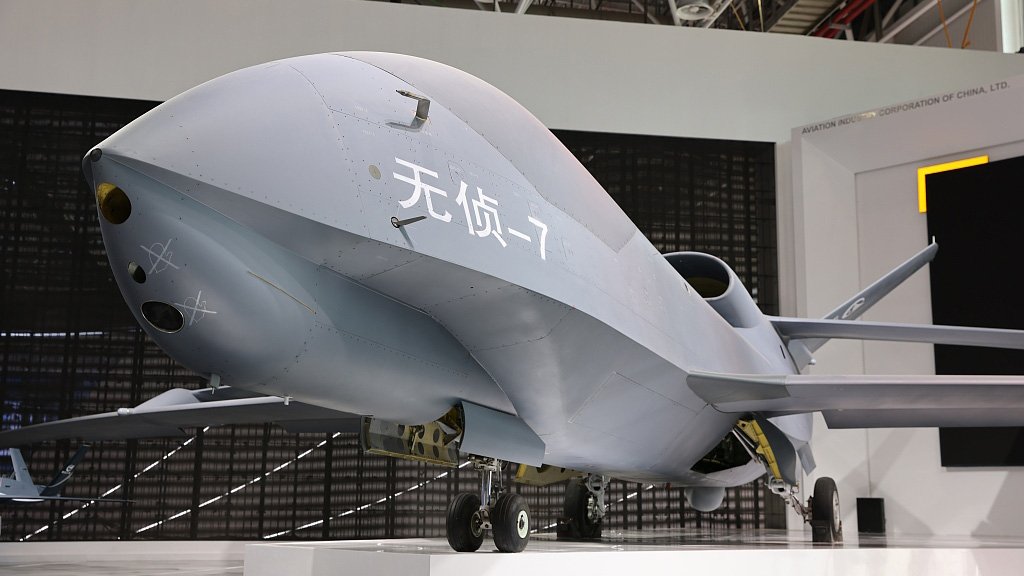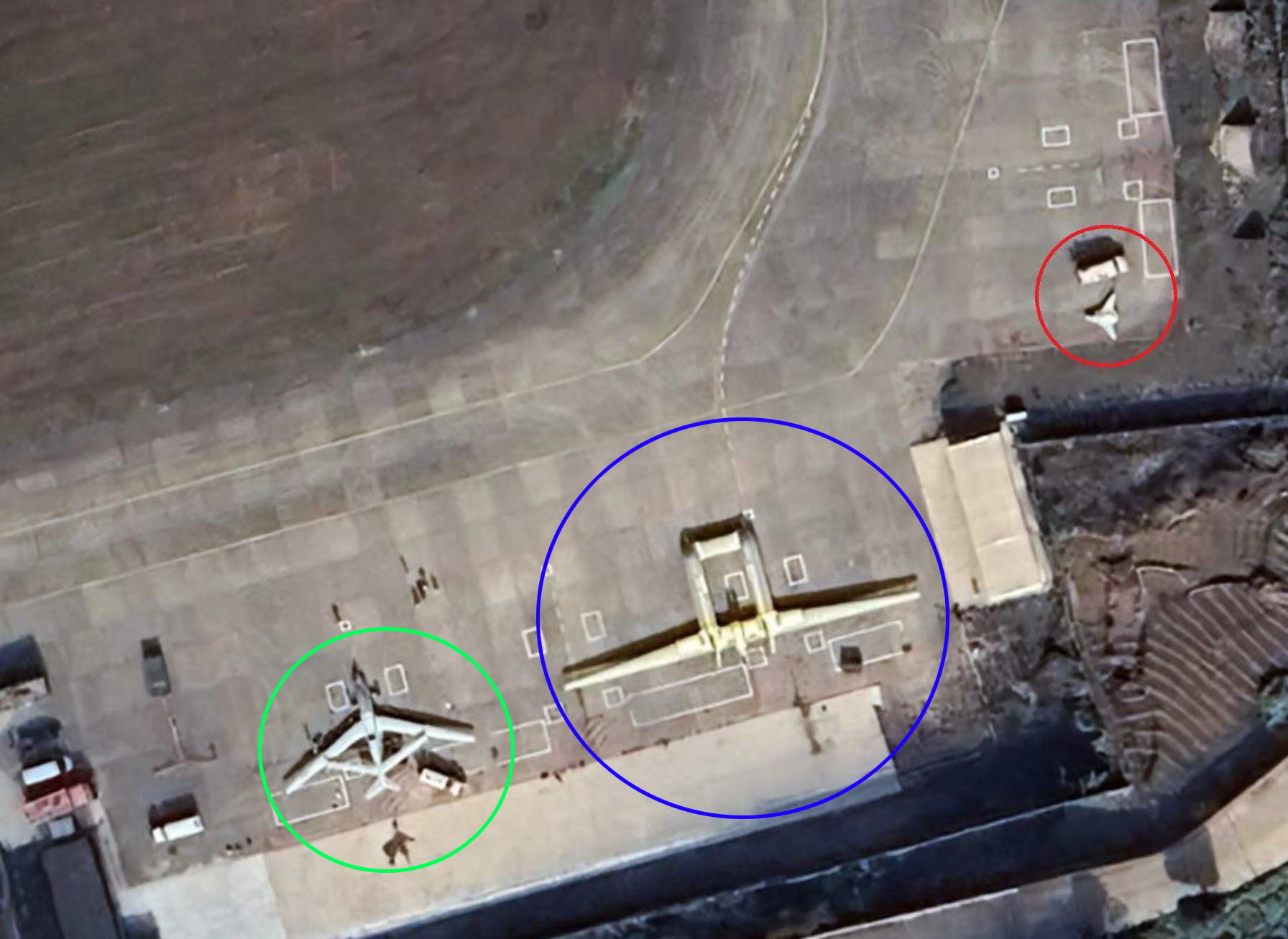For the first time, on March 26, a China People’s Liberation Army (PLA) WZ-7 high-altitude long-endurance unmanned aerial vehicle (UAV) undertook flight maneuvers over the Sea of Japan.
The Japanese Ministry of Defense (MoD) issued a terse statement detailing the incident, noting that the Air Self-Defense Force was compelled to dispatch fighter jets in response to the presence of the Chinese drone.
However, according to the MoD, the Chinese drone did not breach Japanese territorial airspace. The ministry explained that the UAV’s route originated from the continent [of Asia], traversed over the Sea of Japan, and then veered northwestward back toward the mainland.
This statement was supported by a map included in the MoD’s release illustrating the drone’s flight path. The WZ-7’s flight pattern hints at a possible connection to either Russia or North Korea, as China lacks a coastline along the Sea of Japan.
The Ministry suggested that the UAV traversed the airspace of either North Korea or Russia before its flight over the Sea of Japan and its return journey to the continent.

This event marked the first sighting of a WZ-7 drone over the Sea of Japan by Japanese authorities, heightening concerns in the strategically significant body of water situated between Japan’s home islands and mainland East Asia.
The escalating presence of Chinese drones in the region, coupled with the latest development, has prompted Japan to maintain vigilant surveillance amid suspicions of the Chinese military expanding the drones’ flight zones.
The exact motivation behind the WZ-7’s flight remains unknown. However, on the same day, Japanese authorities issued a separate statement regarding the monitoring of a Russian Vishnya class spy ship navigating in international waters along the western coast of Honshu, Japan’s main island.
Additionally, the Japan Self-Defense Forces reported tracking three People’s Liberation Army Navy (PLAN) warships entering the Sea of Japan earlier in the week, including a destroyer, a frigate, and a replenishment ship.
First report of WZ-7 over the Sea of Japan, supposedly from the 48th Regiment of the 16th Special Aircraft Division of NTC in Shuangliao. I'm curious about its flight path, although Shuangliao is about 600 km from the Sea of Japan, it can only pass through NK🇰🇵 or RU🇷🇺 airspace. pic.twitter.com/4dao6snrMg
— Q (@foolsball) March 26, 2024
The potential correlation between these maritime activities and the WZ-7’s flight remains uncertain. However, the high-altitude surveillance capabilities of these drones could prove to be invaluable in providing support for monitoring the movements of PLAN vessels near Japan’s coastline.
Such capabilities could significantly enhance China’s ability to gather real-time intelligence and maintain a comprehensive understanding of maritime activities in the region.
Uncertainty, however, remains regarding the exact routes taken by the WZ-7 to and from the Sea of Japan. The utilization of allied airspace by Chinese UAVs for transit between offshore areas signifies a notable strategic shift.
Accessing foreign airspace enables shorter routes, granting the PLA increased time and efficiency in designated operational zones, especially in regions like the Sea of Japan. This development enhances the PLA’s capability for sustained presence and surveillance in key areas of interest.
WZ-7 Soaring Dragon
The People’s Republic of China’s WZ-7 Soaring Dragon is a high-altitude, long-endurance unmanned aerial vehicle (UAV) and is often likened to the US RQ-4B Global Hawk HALE-class drone, which is also in service with Japan.
Operated by the People’s Liberation Army Air Force (PLAAF) and People’s Liberation Army Navy (PLAN), the jet-powered WZ-7 boasts a range of approximately 4,350 miles and a service ceiling surpassing 60,000 feet.
While publicly available estimates suggest a minimum endurance of 10 hours, actual flight durations could exceed significantly.
Distinguished by its diamond-shaped wings featuring forward-swept flying surfaces extending to the base of the vertical tail, the WZ-7 incorporates a unique design.
The engine’s air intake positioned atop the fuselage and the main engine located at the aircraft’s rear further enhance its distinctive profile.

It may be pointed out that sightings of a WZ-7 surveillance drone near Japan’s coastlines have also occurred in the past.
In January 2023, Chinese WZ-7 surveillance drones were spotted for two consecutive days over the East China Sea, prompting Japanese fighter jets to scramble for interception on both occasions.
Further, the People’s Liberation Army Air Force (PLAAF) has extensively utilized the WZ-7 in the Tibetan region for border surveillance into India.

Additionally, the WZ-7, along with other UAVs such as the BZK-007, BZK-005, KVD-001, CH-4, and TB-001, has been observed flying over and around the Taiwan Strait, highlighting its role in monitoring activities in crucial regions.
The capabilities exhibited by the WZ-7 align with China’s concept of ‘Intelligentized Warfare.’ Experts suggest that equipment like the WZ-7 and the J-16D, a new class of electronic warfare aircraft, could work in tandem, with the WZ-7 providing surveillance data to the J-16D, as previously reported by the EurAsian Times.
- Contact the author at ashishmichel(at)gmail.com
- Follow EurAsian Times on Google News




